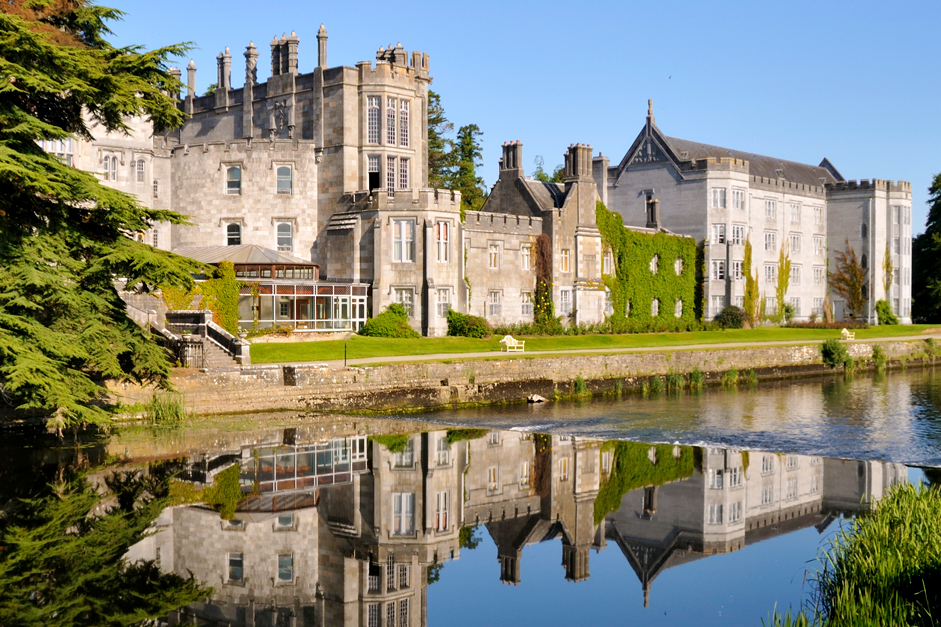When investing in a company, Warren Buffett looks for those who are building an “economic moat.”
The term is apt. Just as a watery moat protects a castle, building an economic moat is the protection a business gains by virtue of its competitive advantages.
Smart businesses build their moats as wide, deep and impenetrable as possible. Fortunately, there are many ways to build a competitive advantage – your moat.
For example, owning valuable patents and trademarks and other forms of intellectual property can keep competition at bay. Operating something as close to a monopoly as possible while staying underneath the Federal Trade Commission's radar can be quite helpful, too.
Other examples of building an economic moat can be found in the digital world. Consider that for every dollar spent in e-commerce, almost 50 cents goes to Amazon. Google has nearly 80 percent of the search revenue market. Google and Facebook together have well over half the market for mobile advertising. Clearly, they have big alligators in their moats.
In September 2016, for the first time ever, the five largest public corporations in the world by market capitalization value were all technology companies; Apple, Google, Microsoft, Amazon and Facebook. That's what a moat can do for a company.
Apple is No. 1 in the category of exceptional technology experience. Google is No. 1 in the online search category. Microsoft is No. 1 in the operating system software category. Amazon is No. 1 in the e-commerce category. Facebook is No. 1 social media category, just reaching an unfathomable 2 billion users.
A skinny moat isn’t much defense. It’s to your advantage to make your moat as impenetrable as possible. Your brand’s position makes up a chunk of that intellectual property widening your competitive advantage – the hungry alligator in your moat, if you will.
We've talked about how to find your brand's position in previous columns and will talk more in upcoming columns. For today, let's assume you've found the right positioning idea. You know your brand's position.
How do you begin building your brand position?
Here's a marketing principle you may find useful: Brands are built with PR and maintained with advertising.
Good PR starts with real news. One way to make real news is to create a new category—or subcategory.
We can't all be global No. 1s like the five technology behemoths mentioned above. But there are many thousands of yet-to-be created valuable categories in local, regional and national markets selling to consumers and/or other businesses.
How many different brands of pasta sauces are there on your grocer's shelves? Lots. It's a really competitive category. Research shows that shoppers want an Italian sauce. That makes it even tougher. There are a lot of Italian sauces already on the shelves. But there was a subcategory available, true Sicilian pasta sauce.
Mid's, a pasta sauce maker, has a Sicilian founder and a Sicilian recipe. So, there you go: "Mid's True Sicilian Pasta Sauce." The position is true to Mid’s, it is not owned by another brand and it resonates with consumers. Today, Mid's, Navarre-based is in thousands of stores in 30 states.
Every brand has a story.
We worked with a client to develop a new category of house siding called insulated siding. It has foam on the back of the vinyl siding, promising the homeowner lower energy bills, among other benefits.
That's newsworthy.
That's why the trade press picked up the story and so did the major siding manufacturers. Smart company. It invented the new category. It owns the category. Today, its insulated siding is on homes across the country.
Another company with which we worked developed a breakthrough that addresses the huge problem relating to upholstery for hospitality and commercial uses—stains, marks, drips, drops. Imagine faux leather that wipes all stains clean with just a dry cloth.
It was a new category for the industry, the first true dry-erase, stain-resistant urethane upholstery. What happened at the industry's annual trade show in Las Vegas didn't stay in Las Vegas. The press ate it up, stains and all. So did the buyers.
Teslan, the world's first nano-based coating with superior corrosion protection for use on bridges, the hulls of ships, giant oil and gas storage tanks, and more. Massillon-based Tesla NanoCoating’s Teslan two-coat application process versus the industry's standard three-coat application can save millions of dollars while leaving a lighter footprint on the environment.
Remember, the first brand to get in the mind with a new idea is hard to dislodge, especially when it is a new category. Think Chrysler and the new category it invented, the minivan. Coke was the first cola, creating a new category more than 100 years ago and still dominates it with a massive 12 percent market share, twice that of No. 2 Pepsi.
Gatorade owns the sports drink category while Red Bull owns the energy drink category. Categories keep dividing. Rarely do they consolidate. Companies consolidate, but not categories.
We understand it's not always possible to create a new category or subcategory. Nevertheless, there are other ways to make news.
Two of the world's best-known marketing strategists, Al Ries and Jack Trout, coined the term “positioning.” Ries said, "Controversy is the best way to generate publicity."
Your brand's positioning is not about having a better product or service. Rather, it's about having a product or service that is different from your competitors’ products or services. Often, this leads to news if not outright controversy.
So be new or capitalize on controversy. Either way, you can make news that focuses you on building an economic moat that's wide, deep and swimming with gators.



